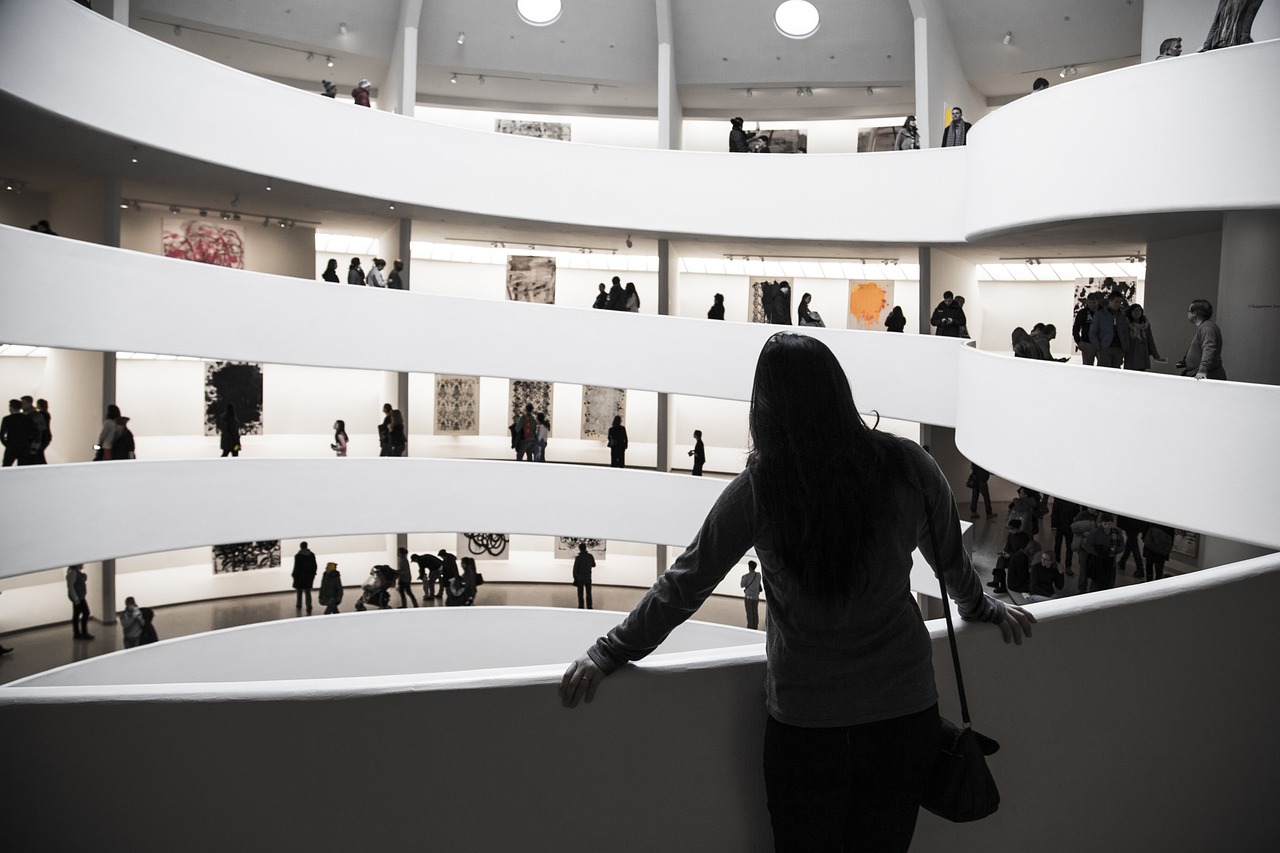The way a person perceives a work of art is and will always be influenced by the context that surrounds them at the time. Context is often thought of as, the room you are in, how the work is displayed, the sounds that can be heard, and the people that are around you. Many people think that art, specifically physical art, should be seen in the context of a museum or that saying that something should be in a museum is a statement of honor for the work and its creator, for the artwork to be put in a place where it will be put on display and seen by hundreds of people every day. And to some extent it is, however, art museums are a complicated issue when it comes to the feeling of a piece, while some people say that museums are the only correct way to view art and that to see a photograph is a bastardization of the work, others think that museums rob art of their feeling and emotion and make the appreciation of art inaccessible to the average person.
Some people think that the right way to see an artwork is to see it in person in a museum where every part of the context is controlled, the lighting, the other works that are around it, the sound, the color of the walls. If you view a work through a picture then the context can’t be controlled and you won’t be put into the right mood to properly appreciate the piece. And undeniably there is a difference between seeing an artwork for the first time in a museum versus seeing it on your phone while scrolling social media in bed. The advent of the camera as well as audio recording has caused art to be seen in many more ways than just the initial piece. Think of how many times you’ve seen the Mona Lisa or Starry Night in your life. Now think of how many times you’ve actually been to the Louvre or the MOMA and actually seen those paintings in person. Chances are, you’ve never seen the paintings in person or have only seen them once or twice, meanwhile they’re everywhere in western pop culture, seen by most people, as a common well known and recognizable cultural object instead of as just a painting. Seeing a work on your phone can make you see the work in a different light, if you see a work of art while waiting in line at a coffee shop you won’t be in the right setting to examine it and appreciate it for what it is, you’ll probably just think “oh that’s cool” then begin giving the worker your order and move on, it won’t stay in your mind or make you think. There is also the fact that when a picture is taken, detail is inevitably lost as you can no longer get closer to see what that blob in the corner is. Sometimes the picture only shows part of the piece and so now the meaning of the painting becomes warped into something it’s not.
In a museum things are different, you are put into a calm and quiet building where you are surrounded by art and given information on the piece and its creator. There are few distractions and all you have to do is wander around and see all the cool paintings and sculptures and pottery, and so much more. When you take interest in a piece you have the opportunity to look at it closely, read about it, see every single little detail that was put into it and see the work as the artist intended. Or do you?
Personally, I have rarely been able to go to an art museum or gallery alone because going without a friend to talk with is the most boring experience ever. Sure the art is cool but it’s just impossible to truly enjoy the works in a room with neutral toned walls, surrounded by people terrified to make a single sound and ruin the concentration of all the strangers around them. You can’t talk, you can get close but not too close for fear of damaging the piece, you can’t joke around about how some statue looks a little funny, you can’t be yourself you have to appreciate the art the way the museum wants you too, the same way everyone has to see it, as a silent observer.
This is not “how the artist intended” or “how it was supposed to be seen”, people have been making art for thousands of years and for thousands of reasons and only recently has being put in a museum been one of those reasons. Historically, artists made art as their way to survive. They made their art to sell or for commission where the art would then live in a person’s home and be enjoyed as a part of everyday life. Many commissioned paintings would be commissioned by the church or people and therefore the ‘appropriate’ context to view the art would be in a place of worship where they can be appreciated as representations of religious stories and teachings. To take these paintings out of their homes and put them into a museum is to remove them from their intended contexts and change their meanings as paintings. Not every painting was made to be examined closely, many were made to just be art, for example, Vincent van Gogh’s Starry Night was made as a way to pass the time while he was in a mental asylum and the painting itself depicts the view from his room’s window.
This isn’t to say that no painting ever has meaning or that how you view a painting can’t affect how it makes you feel, but rather that it’s not something that artists often think about when working. I am an artist myself and I know that when I am making a piece of art, the moment that I make it is just as important as what I am intentionally putting into the piece. It becomes part of the piece itself as my environment affects how I feel and how I act and how I create, and to me, that is how it was meant to be seen as that is how I made it. It is hard to not be in the moment while painting and see the painting in the moment you are in, and in place that you are. Inevitably, part of the meaning or feeling of the piece becomes lost once the moment is gone and it can never be seen the same way again. Even the artist themself inevitably loses that version of the work as time goes on.
But this is not a bad thing. Context is not just time and place as many will think of it as, context is also your moment in life, whether you’re having a hard time or are living comfortably, why are you seeing this piece? Were you dragged here by your friend or did you come here to see this piece specifically? Did you eat breakfast this morning? Did you sleep well last night? What was your childhood like? So much can change how we see a piece of art that no two people can ever have the same interpretation of a piece. We are all different and no matter what a museum will try to do to make you see the art in a certain light. What matters is that the art is there, there is beauty in the multitudes of ways that you see a work of art.
This also isn’t to say that museums are bad but rather that they hold a complicated place in the world of art and history. They both take care of works to ensure that they stay intact for future generations to see them and enjoy them, but they are also responsible for withholding art from the general public, keeping the works in their possession and charging a fee to anyone who wants to see them. They play an important role in our society and in the preservation of artwork but the way we prop them up as being places where art is meant to be takes the art away from the people just as much as it preserves it. Art is meant to to be enjoyed in every part of life not just on special occasion. To trap art behind the paywall of museums is to make it inaccessible to the people who don’t have the money or time to go to museums and turns art from being an activity of expression into a symbol of status and wealth. Art is for everyone and if museums require their entrance fee to stay running then other ways of viewing art shouldn’t be treated as lesser than.









